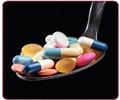Ganga water, known for its self purifying properties, is now scientifically proven to have potential use against multidrug resistant diseases like cholera.
Highlights
- Polluted Ganga river has a healing touch
- Presence of bacteriophages in Ganga waters
- Phage therapy for Multiple-Drug Resistance (MDR) infections
The scientists studied the fresh water sedimentary metagenome-viromes and found that apart from the bacteriophages and the non-putrefying bacteria the waters also contain the double stranded DNA viruses.
Dr. Shanmugam Mayilraj, Senior Principal Scientist at the CSIR-Institute of Microbial Technology Chandigarh, has quoted in The Indian Science Journal that they have identified 20-25 interesting viruses.
These viruses were never reported earlier and are found to be active against certain clinical isolates. This makes them useful against multi-drug resistant infections, or MDR infections.
Some of the MDR infections include:
- Typhoid (Salmonella)
- Cholera (Vibrio)
- Dysentery (Shigella)
- Meningitis
- Pneumonia (Klebsiella and Acinetobacter)
Microbes of the Ganges Water:
The sample of Ganges waters contained bacterial groups:
- Flavobacteria
- β-proteobacteria
- Oscillatoriphycudea
- Actinobacteria
- Α-proteobacteria
- Sphingobacteria
- Deltaproteobacteria
- Siphoviridae
- Podoviridae
- Myoviridae
Details of the Study:
- Started in November 2014
- Commissioned by federal Water Resources and Ganga Rejuvenation Ministry.
- Headed by Kum. Uma Bharati
- Conducted by IMTECH
- Other participants are National Botanical Research Institute, Indian Institute Toxicology Research and Central Institute of Medicinal and Aromatic Plants (all in Lukhnow)
One of the earliest studies on the waters of Ganga was done by E Hanbury Hankin, a British physician. He reported that cholera microbes died within three hours in the Ganga water, while they survived in distilled water even after 48 hours.
Ganga, the Holy River:
The Ganga originates from the western Himalayas and flows through various states of northern India. Throughout its journey, it is joined by various tributaries like Gomti, Kosi and Yamuna.
In Hindu mythology, Ganga is considered to have descended from the heavens for the purpose of redemption of the dead.
Pollution in the Ganga:
The various sources of pollution in Ganga include:
- Sewage from many cities along the Basin
- Industrial wastes
- Religious offerings, often in plastic containers
- Cremation of the deceased, containing bones and ashes
- Un-cremated dead bodies
- Illegal mining in the Ganga river bed
This discovery of bacteriophages in the river Ganga can bridge the gap between its reputation of self-purifying abilities and its potential disease-fighting abilities.
References:
- Bacteriophages and the Mystery of the Ganges - (https://explorecuriocity.org/Explore/ArticleId/2530/bacteriophages-and-the-mystery-of-the-ganges-2530.aspx)












